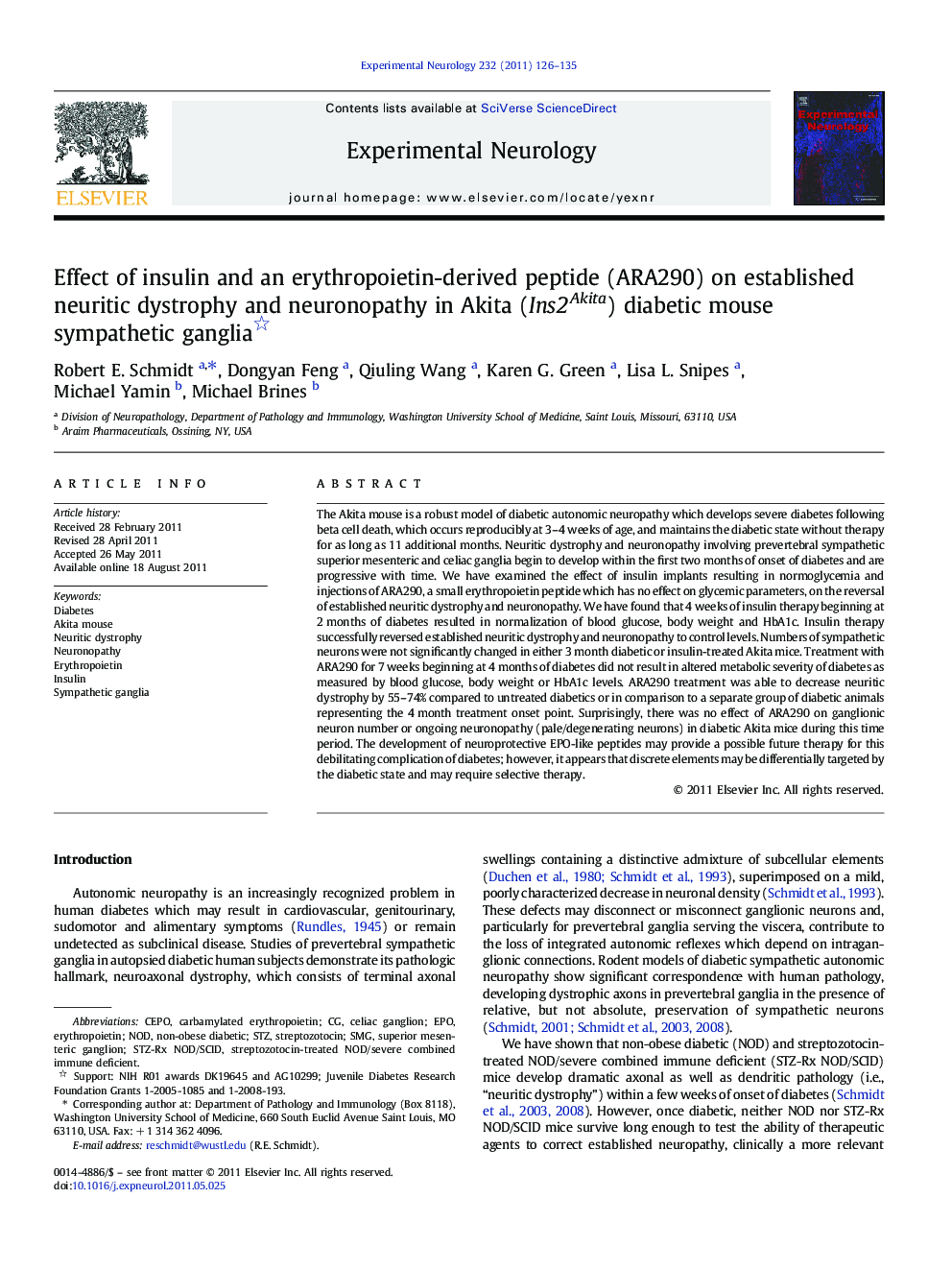| Article ID | Journal | Published Year | Pages | File Type |
|---|---|---|---|---|
| 6018690 | Experimental Neurology | 2011 | 10 Pages |
The Akita mouse is a robust model of diabetic autonomic neuropathy which develops severe diabetes following beta cell death, which occurs reproducibly at 3-4Â weeks of age, and maintains the diabetic state without therapy for as long as 11 additional months. Neuritic dystrophy and neuronopathy involving prevertebral sympathetic superior mesenteric and celiac ganglia begin to develop within the first two months of onset of diabetes and are progressive with time. We have examined the effect of insulin implants resulting in normoglycemia and injections of ARA290, a small erythropoietin peptide which has no effect on glycemic parameters, on the reversal of established neuritic dystrophy and neuronopathy. We have found that 4Â weeks of insulin therapy beginning at 2Â months of diabetes resulted in normalization of blood glucose, body weight and HbA1c. Insulin therapy successfully reversed established neuritic dystrophy and neuronopathy to control levels. Numbers of sympathetic neurons were not significantly changed in either 3Â month diabetic or insulin-treated Akita mice. Treatment with ARA290 for 7Â weeks beginning at 4Â months of diabetes did not result in altered metabolic severity of diabetes as measured by blood glucose, body weight or HbA1c levels. ARA290 treatment was able to decrease neuritic dystrophy by 55-74% compared to untreated diabetics or in comparison to a separate group of diabetic animals representing the 4Â month treatment onset point. Surprisingly, there was no effect of ARA290 on ganglionic neuron number or ongoing neuronopathy (pale/degenerating neurons) in diabetic Akita mice during this time period. The development of neuroprotective EPO-like peptides may provide a possible future therapy for this debilitating complication of diabetes; however, it appears that discrete elements may be differentially targeted by the diabetic state and may require selective therapy.
⺠Akita mice develop severe chronic type 1 diabetes for as long as 11 months. ⺠Neuritic dystrophy and neuronopathy involve prevertebral sympathetic ganglia. ⺠Insulin therapy reverses diabetes, normalizing neuritic dystrophy and neuronopathy. ⺠Erythropoietin mimetic ARA290 reverses neuritic dystrophy but not neuronopathy.
